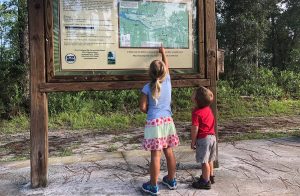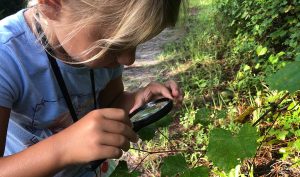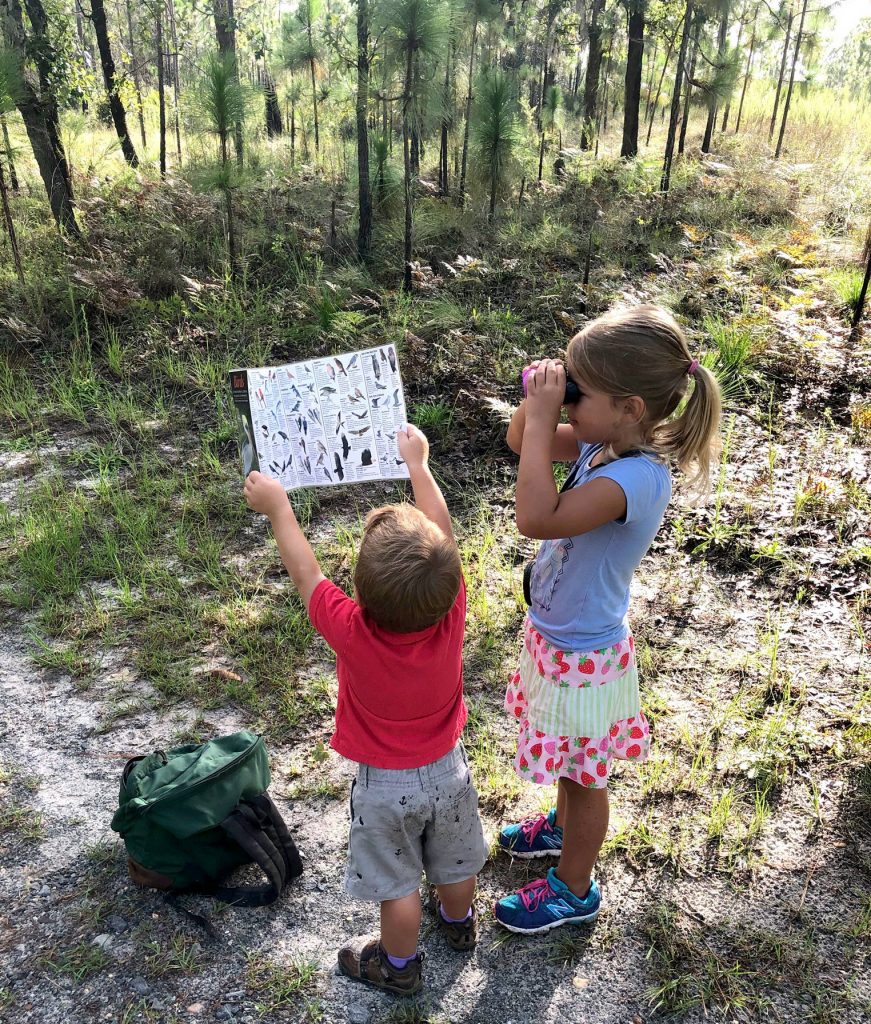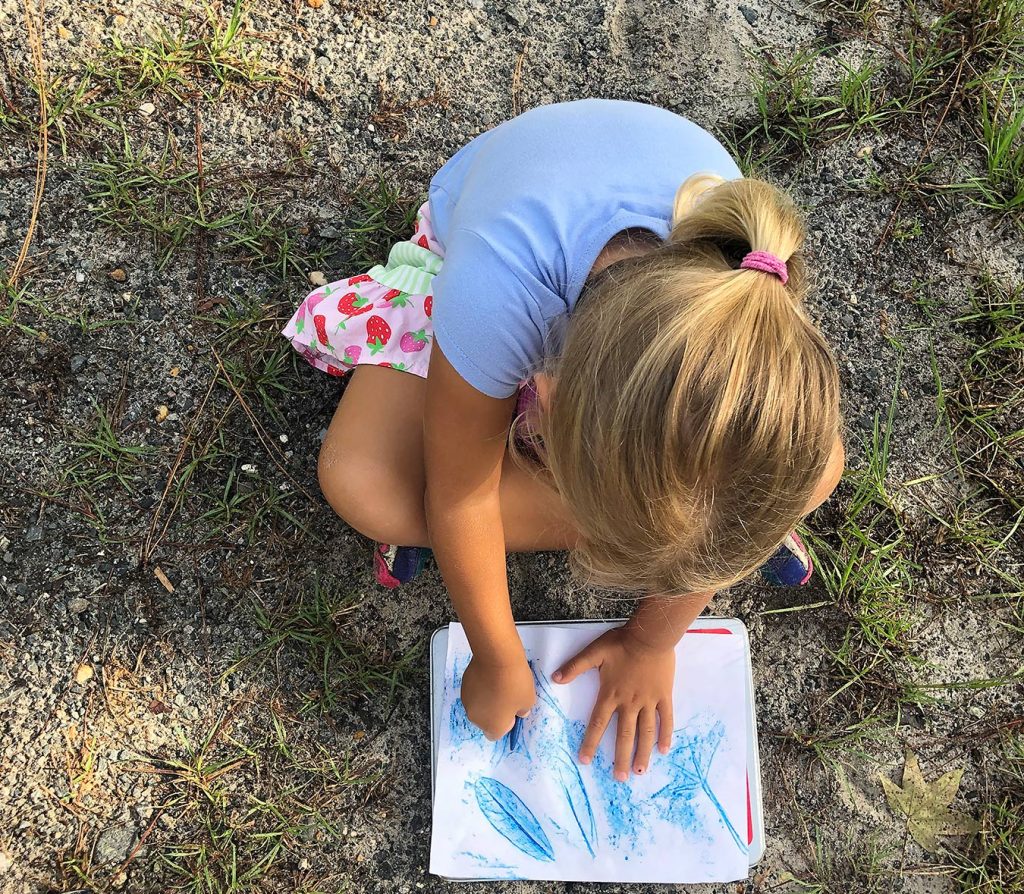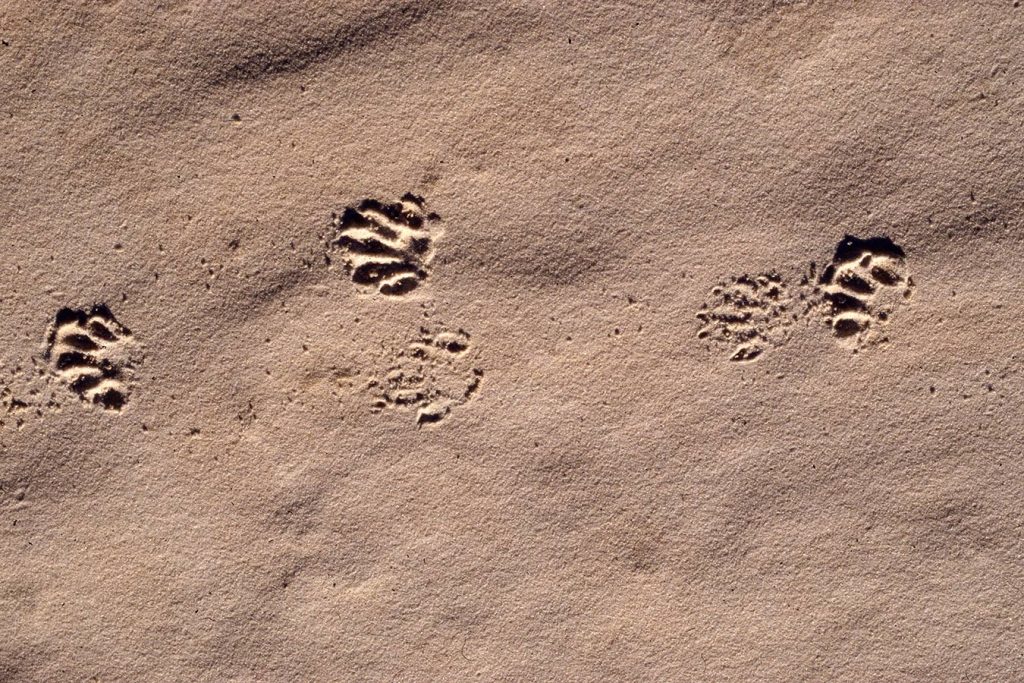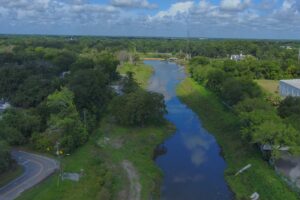Five activities for kids on District lands!
Another school year has begun and hands-on learning in the great outdoors can be a refreshing break from the same routine. You could call it summer camp with an educational bent.
St. Johns River Water Management District public lands offer an ideal opportunity for students to immerse themselves in botany, ornithology, geology, geography, wildlife biology and zoology in a setting suited to social distancing. And there’s no entrance fee!
Chances are you live somewhere near a District-owned site. We buy land to protect and preserve water resources. In addition, these lands protect plant and wildlife habitat and provide areas for public recreation and environmental education. These properties range from wetlands and historically wet areas to dry upland areas suitable for a variety of outdoor activities. Virtually all District properties are open to the public.
We asked our education guru, Public Communications Coordinator Dr. Jennifer Mitchell, to share some ideas for sneaking in a little learning while visiting District lands with your children. She’s really smart and easily came up with five fun and educational outdoor activities. (Don’t forget to pack up your water, snacks, hand sanitizer and bug repellent before heading out).
Jennifer Mitchell’s top five outdoor activities:
1. Hit the trail. Hiking will require your child to use maps and identify basic trail signs. Blaze color corresponds to the trail you are on and knowing which color to follow can keep you on the right trail. You and your child will develop your footwork skills, get practice planning hikes, test out new gear, and build up your physical endurance. “It doesn’t matter where you hike, as long as you hike,” Mitchell says.
2. Practice close observation. A simple magnifying glass can be a key to a whole new universe for your child. Differences in leaf margins (edges) can be more exaggerated and easier to differentiate. Black specks on a grass stalk, once magnified, are clearly seeds waiting to be spread by the wind. Moss and fungi look like ethereal landscapes when we slow down and take the time to observe and magnify them. “We call the moss fairy carpet,” Mitchell says. “Tell your children that they’re looking for fairies when they are observing.”
3. Bird watching? We have it in spades. “District lands offers some of the best locales for nurturing young birders and helping them hone their identification skills,” Mitchell says. For example, the Lake Apopka North Shore is one of the top three birding areas for the entire state (includes Everglades National Park and Merritt Island National Wildlife Refuge). This property is considered one of the most renowned birding destinations in Florida, with 369 different bird species recorded on the property.
4. Rub a leaf! If you’ve never heard of leaf rubbing, here’s a link on how to do it. “The variety of habitats on District lands can be a great place to learn about plant communities or how plants have specific requirements for where they grow,” Mitchell says. “These can include intensity of sunlight, soil conditions, density of other plants, soil moisture conditions. We found several leaves on the ground in the upland and did a leaf rubbing. Then when we noticed that our surroundings were very different and were in the floodplain, and we found leaves on the ground and did leaf rubbing there as well.” This is also a way to keep a souvenir from the trip without impacting your surroundings.
5. Identify animal tracks. Animals aren’t nearly as easy to spot as plants but often they leave footprints behind. Keep an eye on the ground when exploring District lands. You may find that there’s been more wildlife activity on the trail than meets the eye. Here’s an excellent guide to help you find animal tracks with your kids.
In case you’re wondering why our agency owns land, we buy land in the course of our work to protect and preserve water resources. We own or manage more than 772,000 acres of land in our 18-county jurisdiction, so there’s a good chance you are a short drive from an outdoor activity adventure with your child. To find a District property near you, visit www.sjrwmd.com/lands/recreation/list.


